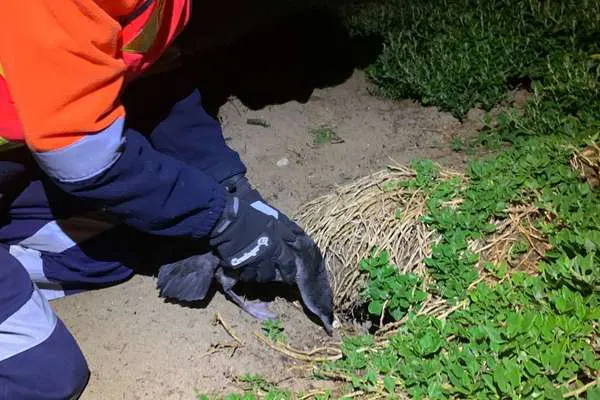
Safe-guarding short-tailed Shearwaters on Phillip Island
Monday, July 25, 2022
Phillip Island in Victoria is home to a colony of over a million native short-tailed shearwaters, protected by Phillip Island Nature Parks. This migratory bird is highly vulnerable to the impacts of global climate change and is in steady decline.
On Phillip Island they have an additional problem. Every year as young fledglings prepare for their first flight, they often make their way onto roads and are hit by cars.
To mitigate this tragedy WIRES has contributed more than $49,800 as part of our National Grants Program to help rangers safeguard the population, particularly during the all-important fledgling season. The Rangers play a huge role in protecting these birds by moving them off the roads, and by making sure the community is aware of the birds through signage, slower speed limits and by encouraging ‘lights off’ in homes and businesses because the birds are often disorientated by light pollution.
In the coming weeks, hundreds of fledging shearwaters will be leaving their burrows to make their first 15,000 km migration north to join their parents on the Aleutian Islands off the coast of Alaska. They will return to the Southern hemisphere within 5-7 years where they’ll contribute to the growing colony on Phillip Island.
This work is part of a collaborative, multi-pronged approach by the Bunurong Land Council Aboriginal Corporation, the Victorian Ornithological Research Group, Department of Transport and Phillip Island Nature Parks rangers who are working together to help expand the breeding habitat of the Shearwater species and protect this vitally important breeding colony. It takes a community to protect a highly vulnerable bird species – thank you for being a part of it!
Other Articles
Grampian bushfires devastation
Interview with WIRES Training and Development
Orphaned Jess now ready for release
Our Wildlife Ambulance fleet is growing!
What a difference WIRES care makes
WIRES provides urgent triage for Flying Fox emergency
Displaced koala receives urgent care
National Parks and Wildlife Service warns of dangers of inappropriate feeding
WIRES funded platypus centre provides a lifeline of hope to declining species
